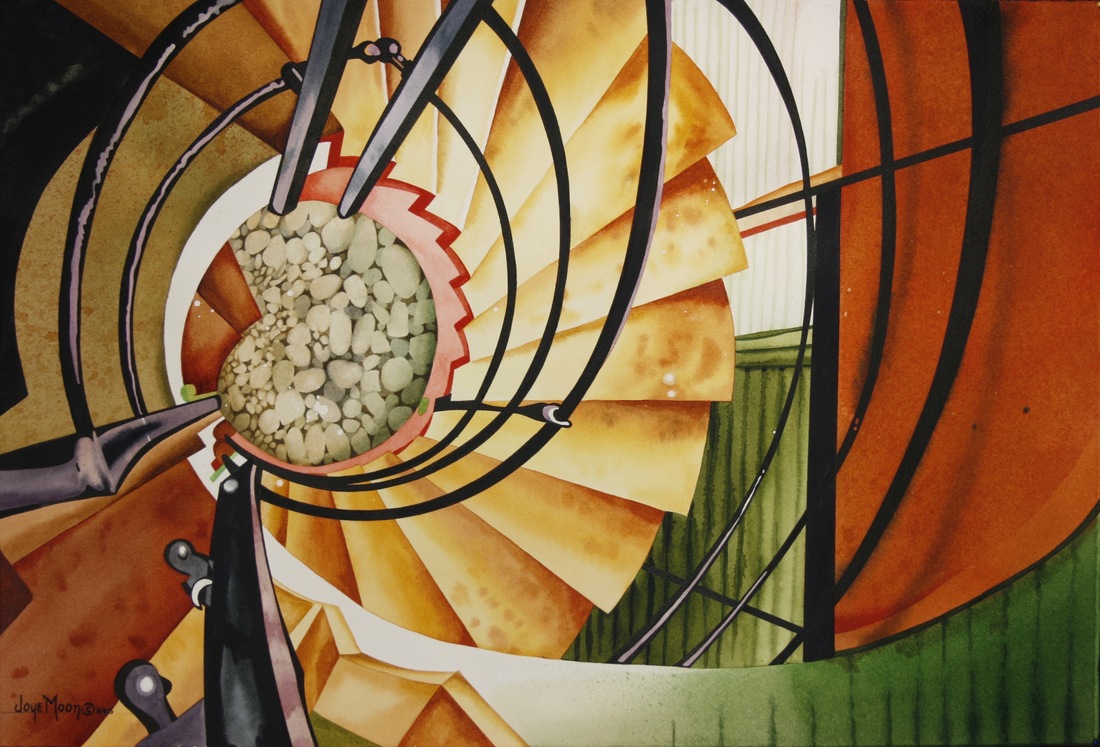
Medici Stairway
*
November 12, 2023
Laurent Benoist: Your abstract watercolour artworks are filled with vibrant colours and dynamic compositions. Can you describe the inspiration behind your work and your creative process?
Joye Moon: Basically, my inspiration begins with a white piece of watercolor paper and all the possibilities it presents. I don't have any preconceived ideas in mind with total non-objective paintings. If I am doing an abstract painting, such as "Flamenco Dancer" and "Summer Swing", I do draw on a basic outline of the subject. As the painting develops, I find areas to strengthen with added shapes and color. I don't choose a color palette before I begin or figure out anything. I start by diving into my paint palette to whatever color my brush gravitates to. Usually a lighter color. I love working wet into wet so I usually start with soft colors that get diluted with the wet surface. I layer color many times to get the depth and saturation I want to achieve.
LB: Abstract art often conveys emotions and feelings. How do you use colour to evoke specific emotions or moods in your paintings? Please share some insights into your colour palette.
JM: My color palette is based on complimentary colors. This gives me the ability to place the true complimentary color next to each other on the paper to create a vibration and attract attention in a certain area. If I blend those complimentary colors, I can create a more neutral color which creates a calm area. Movement is quite important as well. I feel the emotion I create is a happy, fun and uplifting atmosphere. This is most important to me.

Summer Swing
*
LB: Leaving white areas in watercolour paintings and creating negative spaces can lead to powerful contrasts. How do you decide where and when to incorporate these white spaces in your compositions?
JM: Leaving the white of the paper in a watercolor painting is very important. Since it is the first value on the value scale, it adds the sparkle needed in a painting. I sometimes pencil in where I want the white to be such as in "Floating". It is the structural beginning of the composition and sets the foundation as to what to do next. Negative painting is the backbone of my paintings and adds strength to the composition. I use negative painting to direct the viewers eye into and around the painting. It also enhances the main subject/focal point of the painting.
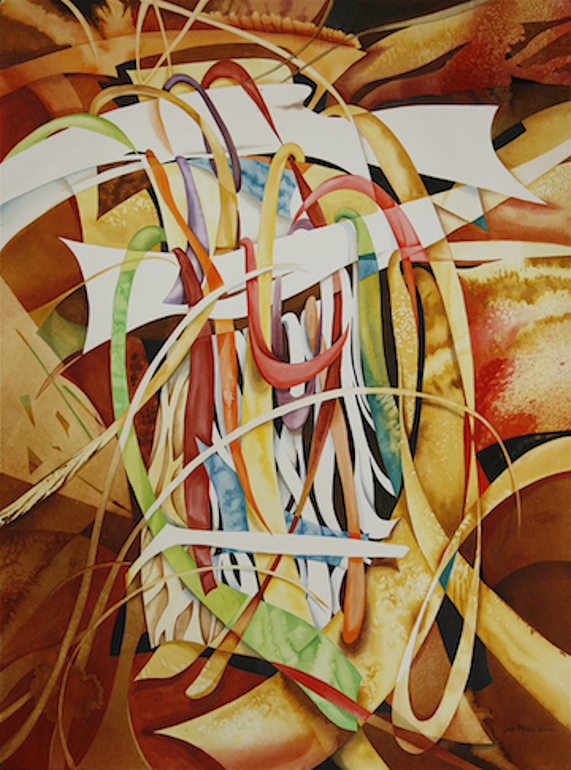
Floating
*
LB: Watercolour is known for its unpredictability. How do you embrace this aspect of the medium in your abstract work, and how does it influence your creative process?
JM: I love the unpredictability of watercolor and I try to use it to my best advantage. I enjoy forcing a burst or blossom to create organic edges, or adding other elements such as surgical gauze to create textures found in nature. Watercolor is the most adaptable medium and can be manipulated in many ways. I embrace all of these options.
LB: How important is spontaneity in your work? Do you ever plan your abstract compositions, or do you prefer to let the process unfold organically?
JM: Although I do plan some paintings, spontaneity is always very important. I let myself get out of the way of the paint and just let things happen. Then I need to figure out how to make that area work with the rest of the painting. It's always a back and forth process. At the end, it all has to work cohesively as a unit.
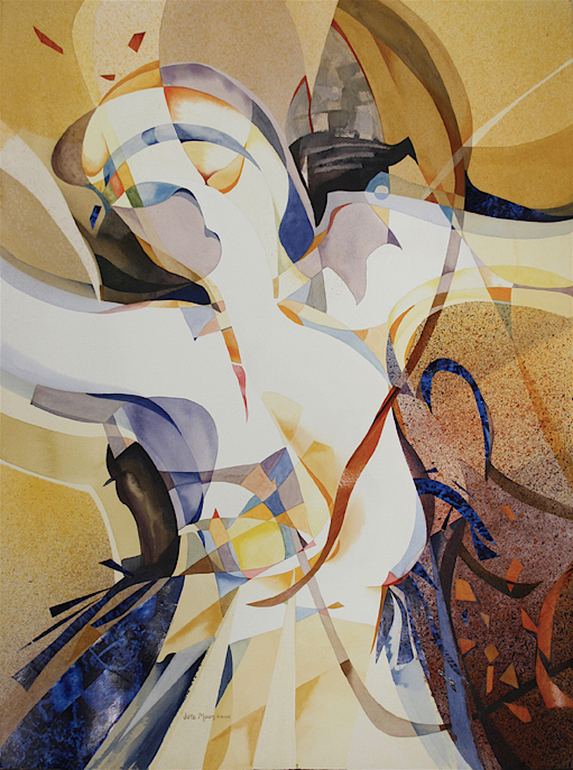
Flamenco Dancer
*
LB: The layering of colours seems to play a crucial role in your artwork. Could you explain your layering process and how it contributes to the depth and complexity of your paintings?
JM: I layer color in every painting I create, either realistic, abstract or non-objective. Since I'm dealing with watercolor, I always start with a thin value of any color. I like to leave some of those thin colors next to the white of the paper to create a glow. Some areas will be layered either with the same color to get a greater saturation of that color or I'll add a different color on top to create a combination color. I also enjoy diluting watercolor paint, putting the paint into a spray bottle and adding subtle sprays of color over an area to either push back an area or enhance the color that is already there. Every time I add more color I have the opportunity to create new color shapes.
LB: Can you tell us about any challenges you've faced in your artistic journey and how you've overcome them?
JM: I am often asked to teach workshops. I feel this is because I am versatile in my subject matter and the variety of methods and techniques I experiment with. Because of this, I can tailor the workshop to meet the needs of different students. The challenge professionally would be that my work is not one thing. I work in realistic portraiture and landscape as well as abstraction to non-objective. Since I am still learning and always pushing the envelop to find new and interesting approaches to apply paint to paper, my work seems to be all over the place. But, in fact, it all holds together with the common neatness I want to achieve and my color palette. I have been fortunate to have my signature membership on 10 Watercolor Societies and exhibit throughout the US and abroad.
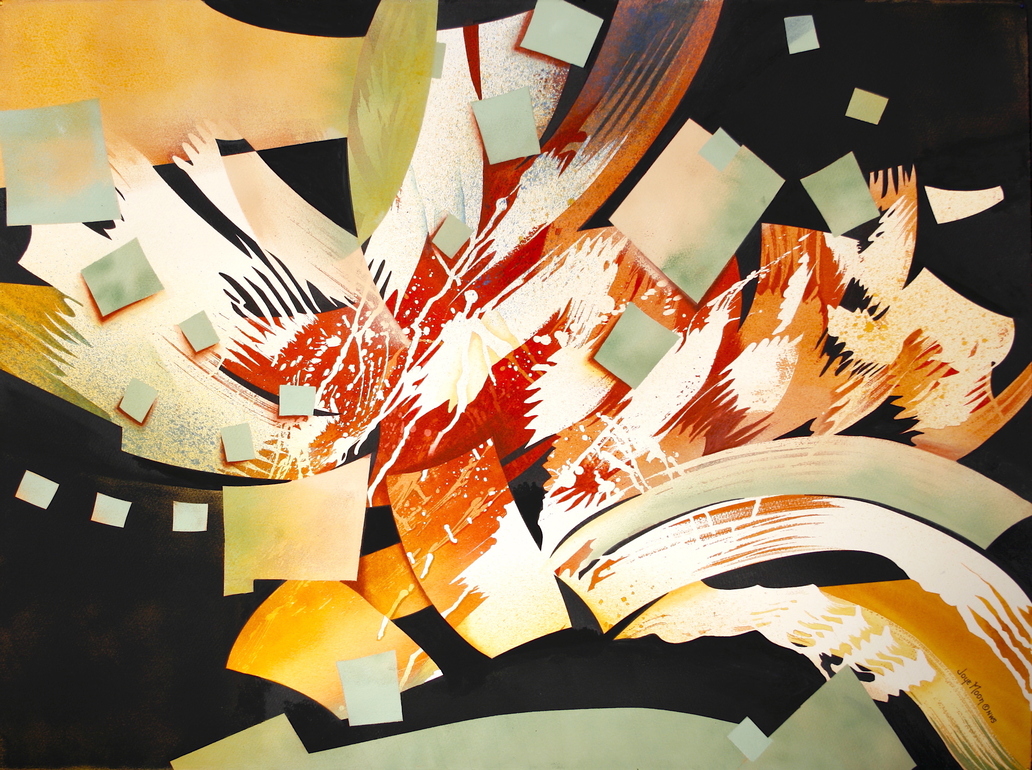
Swept Away
*
LB: Your website mentions that you sometimes work in a series. What draws you to creating series, and how do they differ from individual pieces?
JM: A series is developed when I haven't met my goal, or what I see in my minds eye with the first painting. I learn from the first painting what I should change or modify in the next painting. I will use different colors, or a vertical instead of a horizontal, or vary the composition to either simplify or get more detailed. There are many different reasons why one composition needs to be thought through more than once. I usually get to where I want the painting to be in three paintings. The good part is that I now have three paintings and I have learned for each one.
LB: Lastly, how do you see your art evolving in the future, and are there any new directions you'd like to explore in your watercolour abstract creations?
JM: I can't imagine what the future of my work would be as I am always moving forward with new ideas and processes. Recently, I have been pouring paint to create a variety of subject matter as well as portraiture. This has been most challenging and fun. Compositionally, I have also challenged myself by using an interiors of a buildings, making then into an abstraction, as in "Medici Stairway". The best thing about being an artist is the never ending possibilities and the on-going creative growth that can happen with each painting.
Originally published in The Art of Watetcolor
www.joyemoon.com
www.fineartamerica.com
***
2-day Flower/Cactus Watercolor Design Workshop w/ Joye Moon
Tuesday, Wednesday, November 14, 15, 9:30am-4pm
Creative Studio, Josefina Orozco 19, interior 5
$150us or peso equivalent
More event info
***
Biography
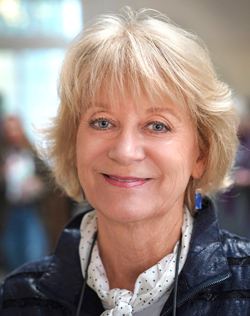
I earned my Bachelors of Fine Arts from the University of Wisconsin-Oshkosh graduating Magna Cum Laude. I was awarded the Distinguished Alumni Award as well as the Chancellor’s Medallion from UW-Oshkosh. I have signature memberships with the National Watercolor Society, Rhode Island, Western Colorado, Kentucky, Wisconsin and the Mississippi Watercolor Societies. I have taught over 200 watercolor workshops throughout the United States and have conducted 36 International group tours to Italy, France, Spain, Greece, Turkey, Germany, Austria, Hungary, Czech Republic, Portugal, Wales, Scotland, England, Mexico, Costa Rica and the Bahamas.
My work has been featured through one woman exhibits and group shows at art galleries, museums throughout the United States as well as exhibiting in over 150 National and International Juried Exhibits, receiving numerous awards. My work has been accepted into International exhibits and has traveled as far as China.
My book, "Exploring Textures in Watercolor," was published by North Light Books in 2009 and has been a bestseller around the world. My work has been featured in "Splash 8" by North Light Books and "How did you paint that? 100 Ways to Paint Flowers and Gardens," by International Artist. My artwork was also featured in "Searching for the Artist Within" by Karlyn Holman. I have also published many articles in art magazines such as American Artist, Watercolor and The Artist Magazine.
**************

Dr. David presents Lokkal, the social network, the prettiest, most-efficient way to see San Miguel online. Our Wall shows it all. Join and add your point of view.
**************
*****
Please contribute to Lokkal,
SMA's online collective:
 ***
***
Discover Lokkal:
Watch the two-minute video below.
Then, just below that, scroll down SMA's Community Wall.
Mission

Visit SMA's Social Network
Contact / Contactar

